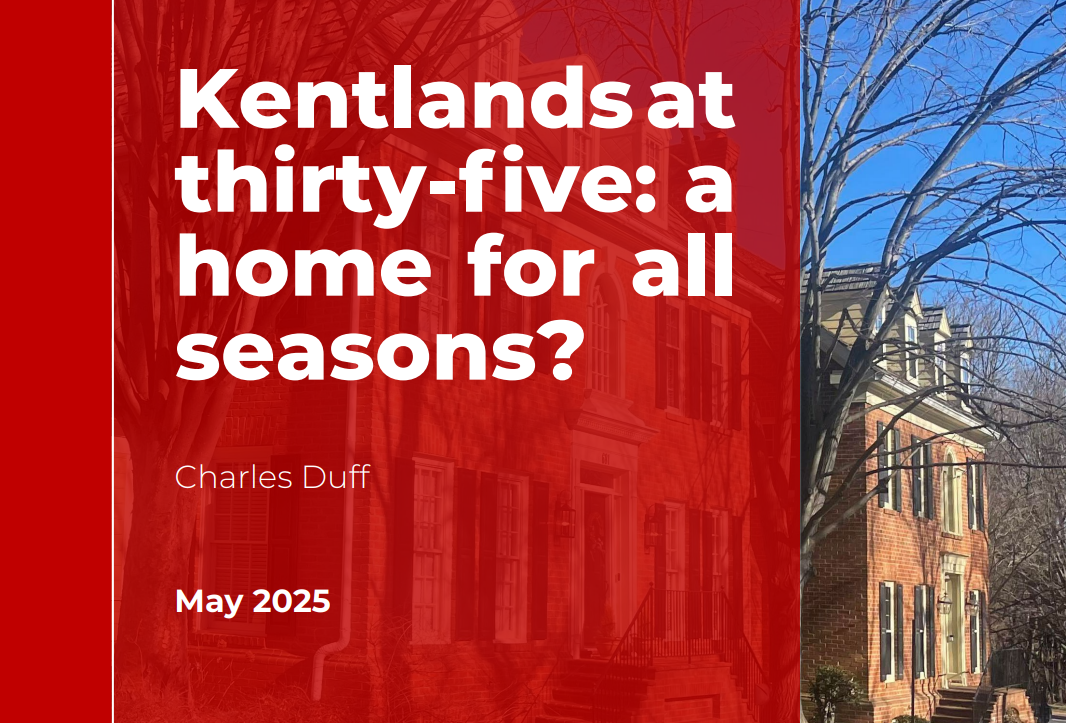Kentlands in Maryland, the first non-resort, new urban development in America, is 35 years old. It is the age at which Wolfgang Amadeus Mozart and Marilyn Monroe died and the ‘danger zone’ for many modish new developments. Fashion has evolved. The first generation of residents are moving into sheltered living or leaving or dying. Will a second generation evolve? Will people still want to live there when the walls are scuffed up and the paint is peeling?
That is the question that the hugely experienced and wise American developer and urban writer, Charles Duff, sets out to ask in this excellent essay. Charles has watched Kentlands evolve over the years and visited it again for this study with questions in mind. Is this a good place? Is it thriving? Do people still want to live there? What, with the precious benefit of hindsight, is working for residents and what is not? Do sales prices justify the effort? An early study in 2001 suggested a 15 per cent value premium. Does that still hold? Charles then draws up a balance sheet of Kentland’s assets and liabilities.
Charles’s key points include:
Assets
1. Superb design at every level, from the plan of the streets to the siting of houses on their lots. The back alleys keep the streets uncluttered by cars. The brick sidewalks look just right.
2. Excellent scale. Street widths vary but are always narrow by American standards. The most common width is 30’, enough for two travel lanes and one lane of parking. Traffic moves politely. Walking and cycling are safe.
3. Attainable craftsmanship. Most houses were built by ordinary suburban builders and were based on models that they were already using. There are no rare materials, and all windows, doors, etc were commonly available at the time. The slight modifications, presumably made by DPZ, make all the difference.
4. Excellent maintenance. The City of Gaithersburg is a hero of the Kentlands story.
5. Large and beautiful lakes. Kentlands would be beautiful without them, not to mention denser, but they are unquestionably an amenity.
6. An impressive array of community facilities. Though they are expensive.
7. A well-organised, well-funded Home Owners Association. It does architectural control very well and hires competent third-party operators to do the day-to-day work of collecting fees and running community facilities.
8. Overall, Kentlands is an ideal environment for children and their families. Walking and biking are easy and safe, neighbours are law-abiding, and everything from schools to pools is within walking or biking range.
Liabilities
1. Kentlands is suburban sprawl, albeit highly liveable suburban sprawl with excellent design and maintenance. Even if it were closer to a regional transit system, it would still not be dense enough to be a replicable model for living with a low carbon footprint.
2. The shopping area is miserable. Given that Kentlands and all adjacent neighbourhoods are completely car-dependent, a Kentlands shopping precinct would have had to have a lot of parking, but cars could have been hidden behind buildings or worked into structures.
3. Main Street buildings are too small. The decision to sell each Main Street building separately was a mistake. If spaces could be combined behind the current facades, there would be better apartments and offices upstairs and better shops and restaurants on the ground floor.
4. The multi-family area could be better. The four-story condominiums are poorly integrated into the neighbourhood fabric, and the buildings themselves are undistinguished in architecture and lot placement.
5. There is no economic mix. Even by the standards of Montgomery County, Maryland, one of the richest political subdivisions in the United States, every house and condominium unit in Kentlands is unaffordable to the vast majority of people.
6. Kentlands is not big enough. Whether you are walking or driving, you get out of it quickly and frequently, and the surrounding developments detract from it. Ironically, Kentlands winds up leaving an impression that people commonly, and regretfully, take with them when they leave the beautiful old Middle Atlantic towns on which Kentlands was modelled. Like many of our old towns, it is a small island of beauty in a sea of ordinary sprawl.
You can read the full essay here


